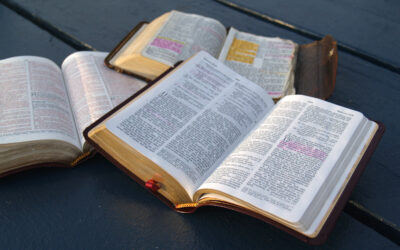The Tower of Babel is arguably one of the most famous Bible stories. It is a fascinating account because the idea of building a skyscraper with the limited knowledge and technology they had is just mindboggling. There are so many questions that come to mind – for instance, how could our primitive ancestors achieve such a feat – and how tall was the tower before the process was scuttled?
The Bible doesn’t give us much on the height of the tower of Babel. However, we can guestimate that the tower of Bable was around 300 feet (91.4) meters high. And the builders were determined to go even higher if God had not stopped them. These estimates are based on archeological findings and ancient Jewish literature.
The Biblical Account
The story of the tower of Babel is in Genesis 11 and takes place about 100 years after the end of the flood. Genesis 11:4 says:
Then they said, “Come, let us build ourselves a city, with a tower that reaches to the heaven, so that we may make a name for ourselves…”
In the following verses of Genesis 11, we are also told that God scattered the people “over all the earth, and they stopped building.” Verse 9 tells us that the tower is called Babel “because there the Lord confused the language of the whole world.”
From the story in Genesis 11, two factors stand out that could help us estimate the height of the tower:
- The people wanted a tower that “reaches to the heaven”
- They used brick instead of stone, and tar for mortar (verse 3)
While there are scanty details from the Biblical record to help us estimate the height of the tower of Babel, archeology has contributed immensely in this regard. For instance, according to Britannica, historical archeologists have established that the site of the tower was in Babylon, an ancient and vibrant city in present-day Iraq.
The Tower Was A Ziggurat
What the Bible story calls a tower is actually a ziggurat according to Bible Archeology. A ziggurat is synonymous with a pyramid and Bible archeology tells us that such structures were common in the history of Mesopotamia – the historical region that covers Iraq and other parts of present-day Arab Middle East.
Throughout Mesopotamia, ziggurats were common and were a central feature of the major cities. The ziggurats were built mainly for religious reasons. The U.S. Department of Defense gives the example of The Great Ziggurat, a pyramid-like structure built over 4,000 years ago. This structure was located in the city of Ur in Sumeria and was dedicated to a moon god called Nanna.
The religious connection of this ziggurat is comparable with the story in Genesis 11. That’s because the builders of the tower of Babel wanted to reach God’s abode and make a name for themselves. They were probably aiming to make a Ziggurant that would distinguish them from other religious people in their region.
The materials used in the construction of the tower of Babel are the very exact materials used to build ziggurats. According to archeological findings, a ziggurat had a core of mud brick and its exterior would be made of baked brick.
As noted earlier, ziggurats were common in ancient Mesopotamia and archeologists have picked out several outstanding ones including the Chogha Zanbil, located in Iran. This ziggurat had a current height of about 24 meters but it is estimated that its original height could have been more than 48 meters.
While ziggurats were commonplace in Mesopotamia, a tower that’s near-identical to the tower of Babel features prominently in Mesopotamian religion. The size of the tower was meant to show adoration for the god it was constructed for, Marduk. This god is so powerful that at some point he’s referred to as the lord of the gods, both in heaven and earth.
The Tower of Babel in Jewish Literature
Estimated details on what could have been the height of the Tower of Babel are available from ancient Jewish texts. One such source is from famous Jewish history writer, Flavius Josephus. Another Jewish text that estimates the tower’s height is the Book of Jubilees.
According to Josephus, the building of the Tower of Babel was led by Nimrod who was a grandson of Noah’s son, Ham. Josephus describes Nimrod as a tyrant and a person who was determined to revenge against God for the flood. Moreover, Nimrod purposed to build a tower so high that, should another flood come, the waters would not reach it.
In the Book of Jubilees, the height of the tower of Babel is said to be 5,433 cubits and 2 palms which, when converted is equal to four kilometers. A four-kilometer-high building in those ancient times is nothing short of a wonder. For this reason, most experts disregard this measurement as unreliable.
When you remember that laborers on the site had no machinery to work with, it’s hard to imagine what it would take to transport building materials four kilometers into the air as the construction progressed. For this reason, some critics interpret the Tower of Babel as a symbolic story rather than an actual historical event. However, this has been refuted by archeological findings which prove the existence of a physical tower.
A more conservative and logical estimate comes from Britannica. According to Britannica, estimates from aerial photography of the tower of Babel indicate that it might have been about 100 meters high.
Conclusion
As famous as the story of the tower of Babel is, it’s not possible to know the exact dimensions of the building. However, we can come up with a good guess from archeological findings. For instance, we now know that huge ziggurats spread across the Mesopotamia region. The highest that have been discovered by archeologists measure tens of feet. It would therefore be safe to infer that the Tower of Babel had almost similar dimensions. As such, an estimation of around 100 feet shouldn’t be too far from the truth.





